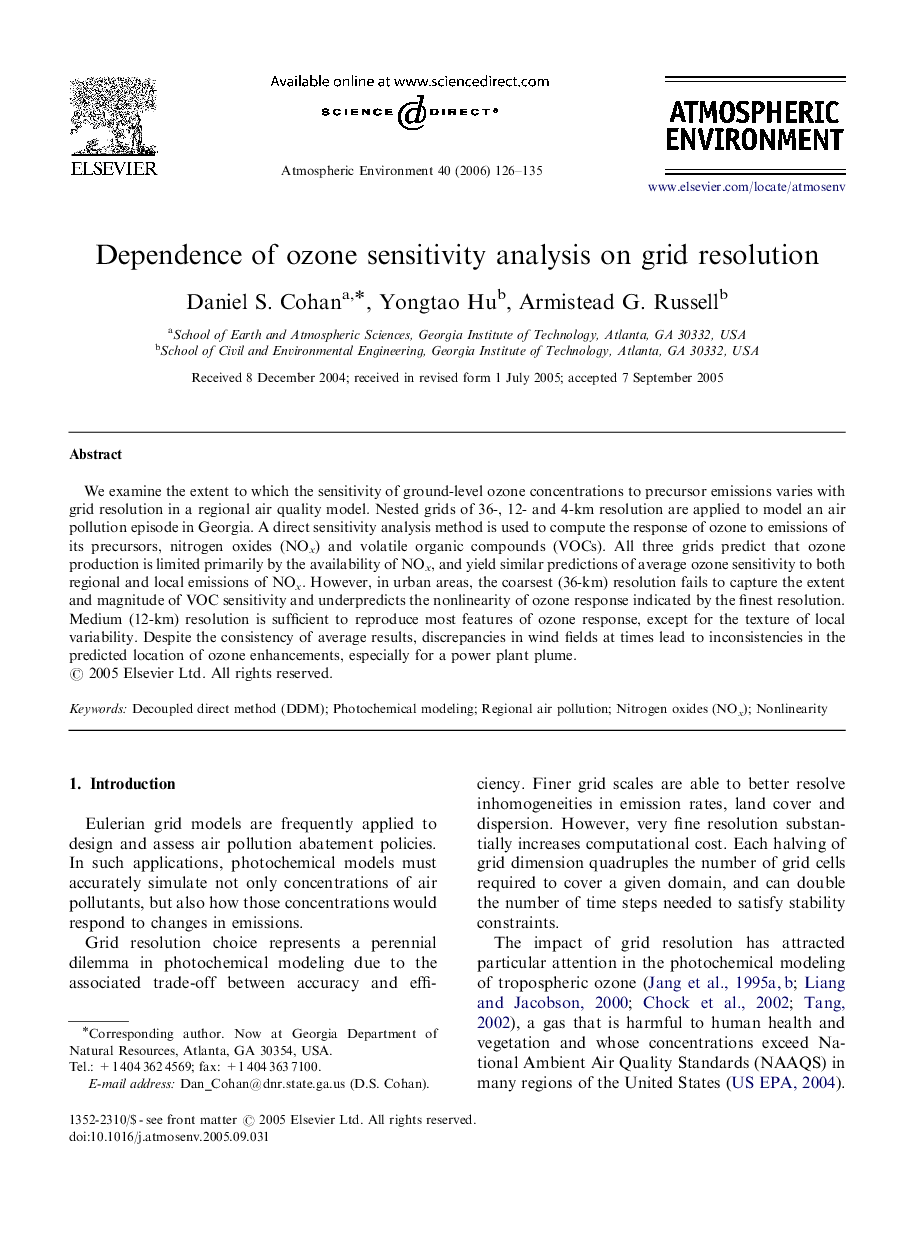| Article ID | Journal | Published Year | Pages | File Type |
|---|---|---|---|---|
| 4443809 | Atmospheric Environment | 2006 | 10 Pages |
We examine the extent to which the sensitivity of ground-level ozone concentrations to precursor emissions varies with grid resolution in a regional air quality model. Nested grids of 36-, 12- and 4-km resolution are applied to model an air pollution episode in Georgia. A direct sensitivity analysis method is used to compute the response of ozone to emissions of its precursors, nitrogen oxides (NOx) and volatile organic compounds (VOCs). All three grids predict that ozone production is limited primarily by the availability of NOx, and yield similar predictions of average ozone sensitivity to both regional and local emissions of NOx. However, in urban areas, the coarsest (36-km) resolution fails to capture the extent and magnitude of VOC sensitivity and underpredicts the nonlinearity of ozone response indicated by the finest resolution. Medium (12-km) resolution is sufficient to reproduce most features of ozone response, except for the texture of local variability. Despite the consistency of average results, discrepancies in wind fields at times lead to inconsistencies in the predicted location of ozone enhancements, especially for a power plant plume.
